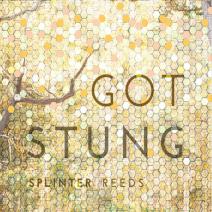Maybe it’s because I was a math major, but I do love to geek out about things like this:
Pianist Kris Davis‘ new album — Duopoly, due out on Sept. 30 — consists of duets with eight different musicians. Sixteen tracks: one apiece with each partner, followed by eight more with the same players in reverse order. It’s a palindrome.
The album’s front cover helps you visualize it all. The tracks start with guitarist Bill Frisell (upper left) and, I’m guessing, work their way “down” the left column, through Craig Taborn, Billy Drummond and Tim Berne. Then they go back up the right-hand column to guitarist Julian Lage. The next eight tracks reverse that sequence.

Oh, but it gets better. The first eight tracks are based on compositions, while the last eight are improvisations. And you might notice that the the eight duo partners consist of two players representing each of four instruments: guitar (Frisell, Lage), Other Piano (Taborn, Angelica Sanchez), drums (Drummond, Marcus Gilmore), and woodwinds (Berne, Don Byron). It’s symmetries upon symmetries.
There are times when I’ll buy the physical form of an album — vinyl or CD — because it feels like the packaging is part of the whole experience. In this case, I’m geeking out on the overall concept as part of the experience. It’s fun so far.
To top it all off, they filmed these sessions, so Duopoly is a DVD as well.
To help promote the album, Davis and Taborn are hitting the road for a series of two-piano showcases, including a stop in Los Angeles for the Angel City Jazz Festival and a show at Oakland’s Mills College. I’ve reviewed solo albums from each of them (here and here), and a duet performance seems like it would be something to savor.
Here’s the itinerary for those duo shows:
September 30 — Firehouse 12 – New Haven, CT
October 1 — Music Center at Washington University – St. Louis, MO
October 2 — Roulette – Brooklyn, NY
October 3 — Kennedy Center – Washington DC
October 5 — Constellation – Chicago, IL
October 6 — Britton Recital Hall – Ann Arbor, MI
October 7 — Wexner Center – Columbus, OH
October 8 — Zipper Hall presented by Angel City Jazz Festival – Los Angeles, CA
October 9 — Mills College – Oakland, CA
October 10 — UC San Diego – San Diego, CA
October 11 — Poncho Concert Hall presented by Earshot Jazz Festival – Seattle, WA
October 13 — Bucknell University – Lewisburg, PA
 Like a lot of musicians, saxophonist
Like a lot of musicians, saxophonist  We visited the Monterey Aquarium last weekend, and it wasn’t until we were nearly in Monterey that I remembered one reason why I love that drive so much. It isn’t the thick tourist traffic or the trucks on two-lane roads. It’s the chance to tune in
We visited the Monterey Aquarium last weekend, and it wasn’t until we were nearly in Monterey that I remembered one reason why I love that drive so much. It isn’t the thick tourist traffic or the trucks on two-lane roads. It’s the chance to tune in  Mary Halvorson’s chiming, calculating guitar; Michael Formanek’s earthy, free-grooving bass; Tomas Fujiwara’s colorful, almost melodic drumming. It’s not that Convallaria is predictable. It’s more that the result is. You know this mix of colors is going to be vibrant and creative.
Mary Halvorson’s chiming, calculating guitar; Michael Formanek’s earthy, free-grooving bass; Tomas Fujiwara’s colorful, almost melodic drumming. It’s not that Convallaria is predictable. It’s more that the result is. You know this mix of colors is going to be vibrant and creative. Not only is Chambers still with us, but he’s even released a new album:
Not only is Chambers still with us, but he’s even released a new album:  The five members of
The five members of  The concluding night of the recent
The concluding night of the recent 
